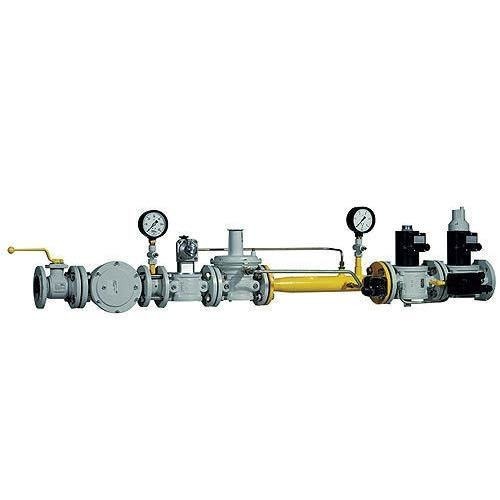#energysecurity
Text
South Korea Makes Breakthrough in Nuclear Fusion Research: Paving the Way for an "Artificial Sun"
South Korea has achieved a significant milestone in the quest for clean energy, successfully running an "artificial sun" for a record-breaking period. This breakthrough in nuclear fusion research brings us closer to replicating the process that powers stars and holds immense potential for a clean and sustainable energy future.
What is Nuclear Fusion and Why is it Called an "Artificial Sun?"
Nuclear fusion is the process by which atomic nuclei combine to form a heavier nucleus, releasing a tremendous amount of energy. This is the same reaction that powers the sun and other stars. Scientists and engineers have been working for decades to replicate this process on Earth in order to harness its potential as a clean energy source.
The term "artificial sun" is used because a fusion reactor replicates the conditions within a star, where immense heat and pressure cause atomic nuclei to fuse. While not literally a miniature sun, these reactors aim to achieve similar energy production through controlled nuclear fusion.
South Korea's Record-Breaking Achievement
South Korea's Korea Superconducting Tokamak Advanced Research (KSTAR) reactor recently achieved a sustained plasma temperature of 100 million degrees Celsius (180 million degrees Fahrenheit) for a record-breaking 48 seconds. This scorching temperature is critical for initiating and maintaining nuclear fusion reactions.
A Promising Step Towards Clean Energy
This breakthrough is a significant step forward in the development of nuclear fusion as a viable energy source. While challenges remain in achieving sustained fusion reactions and building commercially viable reactors, South Korea's success demonstrates significant progress in this field.
#artificialsun#fusionenergy#cleanenergy#futureofenergy#nuclearfusion#sciencebreakthrough#cleanscience#sustainableenergy#kstar#koreascience#nuclearfission#plasmaphysics#thermonuclearfusion#energysecurity#greentech#suninajar#starshot#poweroftheatom#scienceiscool#futureisnow
1 note
·
View note
Text
Microgrid Market Insights: Harnessing Data Analytics for Improved Energy Management
The global microgrid market size is expected to reach USD 224.34 billion by 2030, registering a CAGR of 17.1% from 2024 to 2030, according to a new report by Grand View Research, Inc. The improvement in manufacturing sectors of emerging markets including Mexico, China, and India as a result of favorable government policies to attract investments is expected to promote market growth.

Microgrid Market Report Highlights
The Combined Heat & Power (CHP) power source segment dominated the global market and accounted for more than 37.0% of the overall revenue share in 2023. Shifting preference from conventional Separ ate Heat & Power (SHP) system to energy generation from single fuel is expected to have a substantial impact on the segment growth.
The grid-connected product segment dominated the global market and accounted for more than 65.0% of the overall revenue share in 2023. The rising popularity of smart micro-grid-connected PV systems to provide electricity to consumers by reducing transmission losses is expected to have a substantial impact.
North America led the global market and accounted for more than 35.0% of the overall revenue share in 2023. The high adoption rate of captive power generation methods in the industrial and municipal sectors of the U.S. for reducing reliance on the government-controlled power supply is expected to have a substantial impact.
For More Details or Sample Copy please visit link @: Microgrid Market Report
Microgrid differs from conventional electrical distribution systems as it acts as a close proximity medium between the power generation and power consumption sources which results in increasing efficiency and reducing transmission losses. These systems perform dynamic control over energy sources by enabling autonomous as well as automatic self-healing operations.
The rising importance of captive electricity generation as a key alternative to the regulated power supply by municipal regulators in mining and mechanical engineering sectors is expected to have a strong impact. Furthermore, the rising production output of unconventional sources including shale gas in the U.S. and Canada as a result of high utilization of fracking technology is expected to ensure access of natural gas as a power source over the next eight years.
#MicrogridMarketAnalysis#DistributedEnergyResources#SustainableEnergySolutions#DecentralizedEnergy#GridModernization#EnergySecurity#SmartGridTechnologies#ClimateChangeAdaptation#EnergyInfrastructure#DigitalizationInEnergy#EnergyManagement#GridReliability
0 notes
Text
Oil Prices Dip Following Iran’s Attack On Israel

Singapore (Reuters) – Oil prices experienced a decline on Monday as concerns eased over potential supply disruptions following Iran’s recent attack on Israel, which the Israeli government reported caused limited damage.
Market Reaction
Brent futures for June delivery saw a decrease of 50 cents, or 0.5%, reaching $89.95 a barrel by 0630 GMT. Meanwhile, West Texas Intermediate (WTI) futures for May delivery dropped by 52 cents, or 0.6%, to $85.14 a barrel.
Iran’s attack involved more than 300 missiles and drones, marking the first attack on Israel from another country in over three decades. Initially raising concerns about wider regional conflict and potential disruptions to oil traffic in the Middle East, the attack resulted in only modest damage, with Israel’s Iron Dome defense system intercepting several missiles.
Warren Patterson, head of commodities strategy at ING, noted, “An attack was largely priced in the days leading up to it. Also the limited damage and the fact that there was no loss of life means that maybe Israel’s response will be more measured.”
Supply Risks and Response Scenarios
Iran, a significant producer within the Organization of the Petroleum Exporting Countries (OPEC), currently produces over 3 million barrels per day (bpd) of crude oil. ING analysts suggest potential supply risks include stricter oil sanctions and the possibility of Israeli strikes on Iran’s energy infrastructure.
However, if significant supply disruptions were to occur, the U.S. could release crude oil from its strategic reserves, and OPEC has more than 5 million bpd of spare production capacity.
Market Expectations and Future Scenarios
While oil benchmarks had risen in anticipation of Iran’s retaliatory attack, analysts predict that any lasting price effects would require a material disruption to supply, such as constraints on shipping in the Strait of Hormuz.
Analysts at ANZ Research stated, “Israel’s response will determine whether the escalation ends or continues. The conflict could still be contained to Israel, Iran, and its proxies, with possible involvement of the U.S.”
Long-Term Price Outlook
Citi Research analysts suggest that prolonged tensions could maintain oil prices in the $85-$90 per barrel range. However, they caution that a direct conflict between Iran and Israel could push oil prices above $100 per barrel. While the recent attack heightened geopolitical tensions, the immediate impact on oil markets appears limited. Market participants remain vigilant for further developments, particularly regarding Israel’s response and any potential escalation of conflict in the region.
Also Read: Exploring Types of Wood Preservatives
0 notes
Text
Is America's Energy Policy Putting Us in the Dark? The Risk of Power Outages and Unstable Energy Supply
#carbonemissions #coalandnuclearplants #energysecurity #energysupply #fossilfuels #gridvulnerability #intermittentrenewableenergy #poweroutages #renewableenergysources #USenergypolicy
#Politics#carbonemissions#coalandnuclearplants#energysecurity#energysupply#fossilfuels#gridvulnerability#intermittentrenewableenergy#poweroutages#renewableenergysources#USenergypolicy
0 notes
Text

#GE#alstom#auxiliaryrelay#relay#gridreliability#energymanagement#gridautomation#powersystems#energysecurity#engineeringsolutions#powergrids#electricalengineering#smartgrid#energyefficiency
0 notes
Text
youtube
#youtube#news#Washington#ForeignPressCenter#Briefing#GlobalEnergy#EnergyPolicy#US#USPolicy#WashingtonDC#PressBriefing#ForeignPress#EnergyPriorities#USForeignPolicy#USGovernment#Politics#InternationalRelations#EnergySecurity#RenewableEnergy#FossilFuels#ClimateChange#EnergyIndependence
0 notes
Text
Seven Countries Join Forces to Strengthen Supply Chains for Energy and Food Security
#energysecurity #foodsecurity #geopoliticalrisks #globaltradetensions #supplychains
0 notes
Text
A Milestone in Canada-Italy Relations

Canada-Italy Partnership Strengthens
In an era where global challenges require unified responses, the recent joint statement from Prime Minister Justin Trudeau and Prime Minister Giorgia Meloni marks a pivotal moment. Meeting in Toronto, Ontario, these leaders have not only reaffirmed the deep-rooted friendship and shared values between Canada and Italy but also set a course for strategic cooperation aimed at fostering sustainable prosperity for their citizens.
Shared Goals, Shared Future
Indeed, the commitment to enhancing the resilience of nations in the face of global adversities is a testament to their forward-thinking leadership. Both Canada and Italy, as trading nations, underscore the importance of an effective, rules-based order that fosters predictable and transparent business environments. This approach, Trudeau and Meloni agree, is crucial for sustainable economic growth, innovation, and job creation in both countries.
Economic Ties and Beyond
Highlighting the robust trade and investment relationship, Canada and Italy's economies are notably complementary. Italy, as Canada's 2nd largest trading partner within the European Union, saw bilateral trade reach a record high of $15.8 billion in 2023. Moreover, the contribution of the 1.6 million Canadians of Italian descent plays a significant role in enriching this partnership.
The Roadmap for Enhanced Cooperation
The establishment of the Canada-Italy Roadmap for Enhanced Cooperation is perhaps the most strategic outcome of this meeting. This ambitious initiative outlines concrete plans for collaboration over the next 3-5 years in areas such as energy security, climate change, sustainable economic growth, and artificial intelligence. Through strategic alignment and closer ties, this roadmap is poised to energize the partnership between Canada and Italy, propelling both nations towards shared prosperity on the global stage.
Advancing Global Goals Together
Furthermore, the discussion on Italy’s G7 Presidency priorities reveals a joint commitment to addressing global challenges. Italy will assume the G7 Presidency in 2024, followed by Canada in 2025. Both nations dedicate themselves to advancing priorities such as economic resilience, governance of digital technologies, climate action, and health and food security. The alignment on these issues underscores a shared vision for a more stable and prosperous global community.
A Unified Approach to Global Security
As NATO allies and partners in the G7, G20, and UN, Canada and Italy are well-positioned to tackle unprecedented global security challenges. Their unified stance against adversities, including Russia's aggression in Ukraine and conflicts across the Middle East, showcases their commitment to a free and open Indo-Pacific region, emphasizing the rule of law and inclusive prosperity.
To Sum Up
The Toronto meeting between Prime Ministers Trudeau and Meloni is more than a diplomatic gesture; it's a beacon of hope for a collaborative future. As both leaders look forward to the next meeting in Italy, the foundation laid today promises a strengthened partnership, ready to face global challenges with resilience and strategic cooperation.
Sources: THX News & The Canadian Government.
Read the full article
0 notes
Text
🔒 Unlocking the Power of Safety: Navigating Nuclear Energy's Secure Future 🌐
Embarking on a journey through the heart of nuclear energy, our latest article explores the robust safety measures and contingency plans ensuring the secure operation of nuclear power plants. 🛡️💡 From regulatory compliance to cutting-edge technologies, we uncover the layers of protection that make nuclear energy a safe and viable option for the world's energy needs. Join us in understanding the intricacies of emergency preparedness, radiation protection, and the invaluable lessons learned from past incidents. Safety is our priority as we navigate the path toward a sustainable and secure energy future.
Dive into the comprehensive guide here: Read the Full Article 🌐📖
Please Visit - https://resqore.com/

0 notes
Text

Securing India's Energy Future: Embrace Biofuel for Unmatched Energy Security and Cost Savings!
0 notes
Text
Exploring the Tripartite Nexus of Power in South Asia
Nepal and Bangladesh agreed to sign a long-term agreement of 25 years for the export of 40 megawatts of electricity from Nepal to Bangladesh using the Indian Territory’s power grids as transfer route. This will be the very first inter-South...
#PowerShift#SouthAsia#EnergyAgreement#EnergyTrade#EconomicConnectivity#EnergySecurity#SustainableDevelopment#PressXpress#PX
0 notes
Text
WHAT IS HYBRID/DUAL FUEL TECHNOLOGY?
Hybrid/Dual Fuelling System is an innovative retrofit technology that allows liquid-fired engines to operate on a mixture of liquid fuel and Natural Gas. This is achieved through the use of technologies that are installed externally of the engine.
A hybrid/Dual Fuel System delivers Natural Gas to the cylinders via Air-Gas Mixer located in the standard engine air-intake system. The Gas is then ignited by a diesel “pilot” that acts as an ignition source for the air-gas mixture.
The system requires precise regulation and control of the fuel supply gas. The Hybrid/Dual Fuel System is supplied with a “gas train” consisting of a gas filter, zero-pressure gas regulator, and electrically activated gas solenoid valve. The gas train is designed to accept low-pressure gas and supply regulated gas to the engine at slightly negative pressure.

Hybrid/Dual Fuel solution has been designed for operation both on Manual and Automatic mode through the “State of Art Electronic Controller”. This has been done for ease of operation as per the availability of PNG etc.
The State-Of-The-Art controller monitors critical engine and Dual-Fuel System parameters and activates/ deactivates gas mode according to programmed limits. It provides safety to the engine, while operating in the Dual-fuel mode.
Conversion allows the engine to operate on gas mixtures ranging from 50% upto 70% + of total fuel consumed. Engines converted to Dual-fuel exhibit diesel-like performance in critical areas as efficiency, stability and load acceptance.
The compatible Fuel Gases are – Pipeline natural gas (PNG); Coal-bed Methane (CBM); Compressed natural gas (CNG); Bio-gas (landfill, wastewater); Liquefied natural gas (LNG); wellhead gas.
Hybrid/Dual Fuel solution has been developed as fully integrated solutions with critical components sourced from European suppliers like Dungs, Germany.
In case of eventuality PNG supply is stopped, the sensors on sensing low PNG pressure gives signal to Controller and it automatically reverts the engine to 100% diesel operation irrespective of PNG settings or load condition.
The Changeover from Hybrid/Dual Fuels to 100% Diesel Fuel is seamless and without effecting the operation of DG set and neither it requires action by the Engineer. When the PNG supply is resumed, then the Engine automatically reverts to its predefined settings of PNG+Diesel.
The performance of DG Set in terms of Efficiency, Load bearing capacity, Stability, Reliability is not effected and remains the same as before.
#HybridDualFuelTech#EngineEfficiencyBoost#NaturalGasConversion#SeamlessPowerSwitch#EuropeanQualityComponents#FuelFlexibility#GasAndDieselPower#ReliableDGSet#StateOfTheArtController#EfficientPowerGeneration#CleanEnergySolution#EnergySecurity#EnvironmentFriendlyPower#PoweringTheFuture#GasPoweredEngines#EnginePerformanceEnhancement
1 note
·
View note
Text
UK and Korea Partner For Extra Energy Security
Speech Delivered at The Federation of Korean Industries, Seoul, Republic of Korea

Grant Shapps Official Cabinet Portrait. Photo by Simon Dawson at No 10 Downing Street. Wikimedia.
Grant Shapps
Hello. Aha-nyong-ha-se-yo
It is half a century since South Korea turned to the United Kingdom to help develop its first ever car. That vehicle – the Hyundai Pony – was produced with the aid of a British chief executive, British parts, British engineers, and even British finance and of course, … Korean ingenuity and Korean hard work.
But no-one involved with that fledgling project could have imagined what it might lead to. Today, South Korea is the fifth largest automotive manufacturer in the world – and it all happened here.
And Hyundai’s new, electric Ioniq 5 is the current holder of the prestigious World Car of the Year award.
What an incredible catalyst that early collaboration between our two countries in the 1970s proved to be: the beginning of a success story that, 50 years later, goes from strength to strength. And 140 years after Britain and Korea first established diplomatic relations, our two countries are closer today than they have ever been in the past.
We have Korean students in our schools, Korean pop music in our charts – and, thanks to my teenage daughter, in my home - and Korean food shops on our high streets. And the reason I am here today is because we have incredible opportunities to work even more closer together.
On our energy transition, we can create the secure, clean and reliable power that both our economies need to grow. Through the UK-Korea framework, signed last June, both governments reaffirmed commitments to tackling climate change, and co-operating together to enhance energy security, particularly on renewables.
That’s why, as the new UK Secretary of State for Energy Security and Net Zero, I’m so excited to be in Korea this week, and why I’m delighted to be taking part in this fantastic seminar today.
Thank you representative HAN for inviting me.
Our two nations stand together as partners in the energy transition. But we also stand together in condemning Putin’s abhorrent war on Ukraine. The measures we are taking to isolate Russia internationally, punishing it economically, and helping Ukraine defend its sovereign territory.
But although Vladimir Putin’s weaponization of energy has had a huge impact on our markets over the past year, the truth is that Russia’s gas, just like the president himself, belongs firmly in the past.
And our discussions here today is about seizing the future, not retreating backwards. Our future in Britain will be built on renewables, nuclear power and greater energy efficiency, whilst ensuring that the gas used during the transition is from reliable sources - like our own North Sea.
With both our countries recognise the need to speed up the global energy transition to keep 1.5C alive. The IPPC’s Synthesis Report has emphasised the dire consequences should we fail to act.
So I would obviously urge South Korea to bring forward its coal phase-out from 2050, join the ‘Powering Past Coal Alliance’ and incorporate the COP26 ‘Global Coal to Clean Power’ statement into its energy planning.
The UK’s own ‘coal-to-clean’ story has been powered by offshore wind and we are eager to share expertise in this field with you. Electricity produced from coal in the UK has plummeted from 40% in 2012 to just 1.5% last year.
As a result, we are generating record amounts of electricity by wind – over half our total electricity comes from wind power on a good day.
The UK has established itself as a world leader in offshore wind. Our offshore capacity of 13.8GW is the greatest in Europe, and only second to China globally.
We have the three largest offshore farms in the world. Soon, we will have the fourth too. And we have globally-leading ambitions to deploy up to 50GW by 2030, which will include up to 5GW of floating wind platforms.
So we’re scaling-up renewables, and the development of a competitive domestic supply chain, that will meet our decarbonisation objectives. It will also make us more resilient to economic shocks and provide energy security for future generations.
And then there’s the economic opportunities that the transition to clean energy will bring. The tipping point, when holding on to coal and gas power will no longer make economic sense, never mind environmental sense is getting closer and closer.
So we are focused on leveraging private investment alongside the public investment needed to support our ambitions and deliver net zero.
But just as crucial as these domestic priorities we need to collaborate with key international partners too – and that means places like the Republic of Korea. We have so much to offer each other. I would strongly encourage companies which have invested in the offshore wind sector to consider coming to the UK.
In the UK, the Offshore Wind Manufacturing Investment Scheme has made funding available to boost investment in major port and manufacturing infrastructure.
One fantastic example this scheme has supported is a £512 million investment by Korean company SeAH Wind, a subsidiary of SeAH Steel whose CEO I am meeting this week, in a brand-new factory manufacturing offshore wind turbine monopile foundations in Teesside, England: a brilliant example of our two countries working together.
I hope this is just the first of many successful ventures between the UK and the Republic of Korea and I would encourage interested companies to contact the British Embassy here in Seoul to better understand how the UK Government can help further investments.
But the scope for collaboration goes beyond investment in the UK.
The UK is an ally in South Korea’s offshore wind development. You have set an impressive target of 12 GW offshore wind by 2030, with over 25 projects already in development.
This includes huge floating offshore wind potential, which is already attracting UK players to your emerging market. As that market grows, the UK can become an even more trusted partner.
Our expertise covers every phase of policy and project development. We have established experience in oil and gas, marine and subsea, and can offer a unique combination of assets and opportunities to build on current ties between our countries.
The British Embassy in Seoul is already starting this engagement, organising webinars to promote our offshore wind journey - and further areas of partnership. Indeed, UK companies represent 60% of Korean offshore wind engineering contracts.
I have been briefed on Corio Generation’s plan to build a 2.6GW floating wind portfolio of five projects, including working with Shell, on 1.5GW and 1.4GW of floating offshore wind in Ulsan.
BP Renewables and Deep Wind Offshore recently formed a joint venture to develop offshore wind in Korea, with four projects across the Korean peninsula with a potential generating capacity of up to 6 GW.
These examples show the value that the UK can bring to Korea - and what can be accomplished when we work side by side.
So, on this 140th anniversary of UK/Korea diplomatic relations and, as we approach the 50th anniversary of the iconic Hyundai Pony launch, let us look forward to future success.
A future of greater energy security. A future where clean renewables and nuclear power rapidly make fossil fuels obsolete. And a future of close, mutually-beneficial collaboration between Britain and Korea.
Working together, to power our success.
Thank you.
Sources: THX News, Department for Energy Security and Net Zero and The Rt Hon Grant Shapps MP
Read the full article
0 notes
Photo

How Joe Biden's oil bet went sideways
In 2022, the US government helped fight inflation with a smart oil trade: Selling from the Strategic Petroleum Reserve (SPR) when prices were high eased pressure on US consumers and generated big profits for the Treasury.Read more...
https://qz.com/how-joe-bidens-oil-bet-went-sideways-1850295531
#joebiden#opec#pricing#petroleumpolitics#jennifergranholm#energy#skandaamarnath#priceofoil#petroleumindustry#articles#arnabdatta#strategicpetroleumreserve#business2cfinance#petroleumintheunitedstates#oilstorage#energysecurity#whitehouse#petroleum#Tim Fernholz#Quartz
0 notes
Link
#Australia#energysecurity#EuropeanUnion#G7nations#Indiaoilimports#MinistryofExternalAffairs#oilsupplier#pricecap#Russia-Ukraineconflict#Russiancrudepricecap#seaborneRussian-origincrudeoil
0 notes
Text
youtube
#youtube#news#DeputySecretary#State#KirkMCampbell#USEnergyCouncilMeeting#US#EU#Energy#CouncilMeeting#diplomacy#internationalrelations#USStateDepartment#EuropeanUnion#energycooperation#sustainableenergy#energysecurity#globalaffairs#foreignpolicy#publicdiplomacy#energymanagement#energyefficiency
0 notes